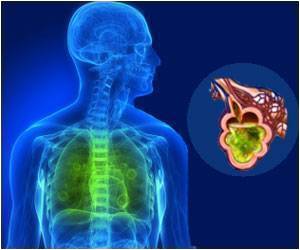
With this knowledge of nebulized epinephrine''s effectiveness, and with its 30-year track record for safety, pediatricians can be confident of the drug''s effectiveness when treating a child with croup, said a U.S. expert not affiliated with the review.
Although several small studies previously had found support for this common practice, a systematic review of the evidence had been lacking.
Croup accounts for about 15 percent of the pediatric respiratory infections seen in clinics and emergency rooms. Viral infections cause most cases of croup. Generally, the sick child develops a barking cough, hoarse voice and varying degrees of noisy breathing.
"The noisy breathing results from swelling of the area of the trachea, or windpipe, at the level just below the larynx, which is also known as the voice box," said lead author Candice Bjornson, M.D, a pediatric pulmonologist and associate professor with the Alberta Children''s Hospital at the University of Calgary, in Canada.
The review appears in the current issue of The Cochrane Library, a publication of The Cochrane Collaboration.
Advertisement
"Nebulized, inhaled epinephrine is given to children with more severe swelling to cause a temporary shrinkage in the swollen area of the trachea, to reduce the child''s work of breathing," Bjornson said
"The [epinephrine] may tide the child over until the steroid kicks in," said Lloyd Werk, M.D., chief of consultative pediatrics with Nemours, a large multistate children''s health system. "This treatment can more quickly relieve suffering for both the child and the parents."
Advertisement
The Cochrane researchers analyzed eight controlled studies that specifically addressed epinephrine''s effectiveness for treating croup, comprising 225 children with moderate to severe illness. The children either had an evaluation in an emergency department or were in the hospital.
Werk does cite the short action of nebulized epinephrine as a limitation. He cautions parents to follow their doctor''s advice carefully in a case where their child seems to be improving rapidly.
"I may say, ‘We will give your child a trial of this nebulized epinephrine. If there is a response, please stay for one to two hours observation so that we can assess if further treatment necessary.'' Yet, after half an hour, a parent will see an improvement and want to leave," Werk said. Even with the use of this therapy there are times when symptoms can again worsen, he warned.
He added that the use of nebulized epinephrine is generally restricted to medical facilities. Epinephrine is not appropriate for at-home use because of the need for monitoring the child and also because the treatment involves the risk of a serious side effect, cardiac toxicity, with repeated administrations.
Source-Newswise










